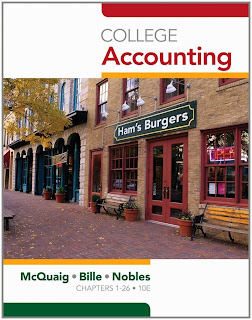The Accounting Procedures Guidebook reveals the procedures and forms you will need for every accounting system, from accounts payable to treasury. Procedures are separately stated for manual and computerized accounting systems. We also cover outlier topics that do not directly impact traditional accounting functions, such as shipping, receiving, and purchasing. There are review questions and answers at the end of every chapter.
About the Author
Steven Bragg has published more than 50 accounting books. He has been the CFO or controller of both public and private companies, and has been a consulting manager with Ernst & Young and an auditor with Deloitte & Touche. He holds an MBA from Babson College, a Master of Finance degree from Bentley College, and a BA from the University of Maine. He also manages the Accounting Best Practices podcast.
Accounting is all about rules. Those rules cannot be followed consistently or efficiently in the absence of well defined and documented procedures. The Accounting Procedures Guidebook contains everything one needs to know in order to prioritize, develop, document, and implement those procedures. Mr. Bragg has a unique ability to present complex and (potentially) mundane information in an interesting and accessible manner. This book is no exception. I highly recommend it.
Well-designed and documented accounting procedures are the lifeblood of an efficient accounting department. Whether providing guidance for new staff or the opportunity for reduced substantive work for auditors, time spent developing accounting procedures is well invested. The Accounting Procedures Guidebook provides the foundation for those well-designed procedures.
The Accounting Procedures Guidebook takes the confusion out of accounting procedures. Businesses of all sizes need to know how to prioritize, create, document, and implement proper procedures. The sample forms and procedures are incredibly useful. The principles explained within this book will help strengthen the foundation of any business.
Product Details :
- Paperback: 344 pages
- Publisher: Accounting Tools (February 29, 2012)
- Language: English
- ISBN-10: 193891001X
- ISBN-13: 978-1938910012
- Product Dimensions: 0.7 x 6.9 x 9.8 inches
More Details about The Accounting Procedures Guidebook, 1st Edition



,+1st+Edition.jpg)
,+1st+Edition.jpg)




,+3rd+Edition.jpg)

,+4th+Edition.jpg)




